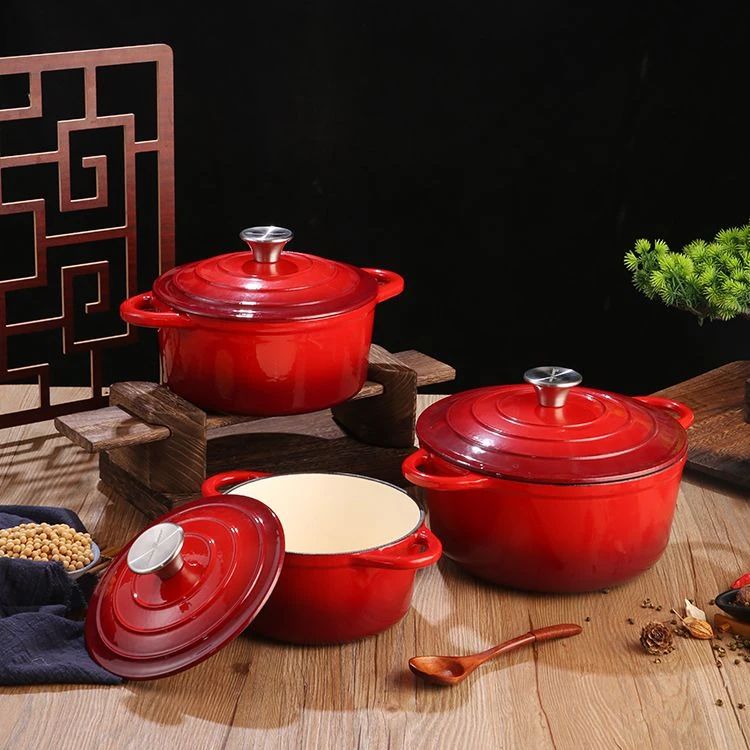
Exploring Various Types of Cast Iron Pans and Their Unique Features
Different Kinds of Cast Iron Pans A Comprehensive Guide
Cast iron pans have stood the test of time, beloved by cooks for their exceptional heat retention, durability, and versatility. However, not all cast iron pans are created equal. There are various types, each with unique characteristics and uses. Understanding these differences can enhance your cooking experience and help you choose the right pan for your needs.
1. Traditional Cast Iron Skillets
The most common type of cast iron pan is the traditional skillet. These pans are characterized by their thick, heavy construction and come in various sizes, typically ranging from 6 inches to 16 inches in diameter. A skillet's main advantage is its ability to retain heat even after adding cold ingredients, making it ideal for searing, frying, and baking. They often come with sloped sides that facilitate easy flipping and stirring. Most skillets feature a long handle and a helper handle (on larger sizes) for easy maneuverability. With proper seasoning, they develop a natural non-stick surface over time.
Enameled cast iron pans are coated with a layer of enamel, which provides a colorful finish and eliminates the need for seasoning. This type of cast iron is resistant to rust and can be used with acidic foods without fear of leaching iron into your dish. Enameled cast iron is perfect for slow cooking and braising, making it popular for dishes like coq au vin or beef stew. However, these pans require careful handling as the enamel can chip if dropped or scraped with metal utensils.
3. Dutch Ovens
Dutch ovens are heavy, deep pots with a tight-fitting lid, perfect for braising, baking, and stewing. While they can be made of various materials, the cast iron variant is particularly favored for its heat distribution. Dutch ovens come in both traditional and enameled forms, with enameled versions allowing for cooking acidic dishes without damaging the pot. They are versatile and can be used on the stovetop or in the oven, making them a must-have for any kitchen.
different kinds of cast iron pans

4. Cast Iron Griddles
Cast iron griddles feature a flat surface with low sides, ideal for cooking pancakes, sandwiches, and grilled dishes. Some models come with two handles, while others have one long handle for easier lifting. A cast iron griddle heats evenly, allowing you to achieve a beautiful crust on foods while retaining moisture inside. Many griddles also have ridges to create grill marks, adding aesthetic appeal to grilled meats and vegetables.
5. Cast Iron Grill Pans
Similar to griddles but with raised ridges, grill pans allow excess fat to drain away while creating impressive grill marks on your food. These pans are perfect for indoor grilling, enabling you to achieve the smoky flavors of outdoor grilling. They come in various sizes and shapes, making them versatile for different cooking needs. Like other cast iron cookware, grill pans require seasoning to maintain their non-stick qualities.
6. Specialty Cast Iron Pans
In addition to the common varieties, there are specialty cast iron pans designed for specific tasks. For instance, cornbread skillets, mini skillets, and even cast iron baking dishes for pizzas and desserts cater to niche cooking styles. These pans often come with unique shapes that excite the presentation of your culinary creations.
Conclusion
Choosing the right cast iron pan can dramatically influence your cooking. While traditional skillets remain a staple, exploring enameled options, Dutch ovens, griddles, and specialty pans can enrich your culinary toolkit. With a little care and proper maintenance, cast iron cookware can last a lifetime, becoming a cherished companion in your cooking adventures. Whether you’re a novice or an experienced chef, a cast iron pan can elevate your cooking experience to new heights.
-
Cast Iron Cookware- Baixiang County Zhongda Machinery Manufacturing Co., Ltd.|Non-Stick&SmokelessNewsAug.09,2025
-
Black Cast Iron Pancake Pan - Baixiang County Zhongda Machinery | Non-Stick, Heat ResistantNewsAug.09,2025
-
Versatile Cast Iron Ovens: Non-Stick, Round & XL Dutch OvensNewsAug.09,2025
-
High Quality Kitchen Durable Black Round Cast Iron Cookware Pancake Crepe Pan|Non-Stick&Heat RetentionNewsAug.09,2025
-
High Quality Kitchen Durable Black Round Cast Iron Cookware Pancake Crepe Pan With Wooden Handle-Baixiang County Zhongda Machinery Manufacturing Co., Ltd.|non-stick surface&even heat distributionNewsAug.09,2025
-
High Quality Kitchen Durable Black Round Cast Iron Cookware Pancake Crepe Pan With Wooden Handle-Baixiang County Zhongda Machinery Manufacturing Co., Ltd.|Non-Stick, Heat Retention, DurableNewsAug.08,2025


